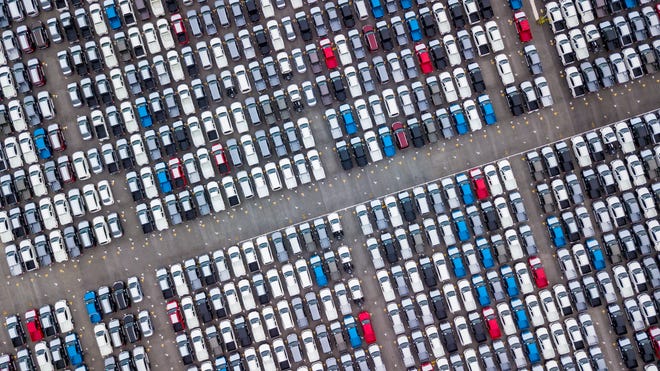
Borrowers with low credit scores are falling behind on their car loan payments as inflation eats away at consumer spending power.
A report from Cox Automotive found 1.89% of auto loans in January were “severely delinquent” and at least 60 days behind payment, the highest rate since 2006.
Another report from S&P Global Ratings published last month says more than 6% of payments on subprime loans – those typically offered to people with lower credit scores that come with high interest rates – were at least 60 days late at the end of 2022. It was the highest December level since the credit rating agency started tracking in 2000.
“I think we’re starting to see the stress on the consumer,” said S&P credit analyst Amy Martin. “Not only are (subprime loan delinquencies) higher than pre-pandemic levels, they’re higher than December of 2008.”

Why are loan delinquencies rising?
While the job market remains strong, Martin notes that consumers are feeling the pinch through inflation and the end of pandemic stimulus checks and child tax credit payments.
Meanwhile, interest rates on auto loans have gone up.
“They got hit with a double whammy,” Martin said. “The subprime consumer is being impacted to a great extent by inflationary pressures, and their vehicle loans are not as affordable as they had been in the past.”
But the subprime loans that borrowers are falling behind on remain a small portion of overall auto loans. Cox Automotive found buyers with subprime credit scores accounted for just 5.2% of sales in December compared to 13.9% in 2017.
“The overall automotive portfolio of loans is relatively healthy still,” Cox Automotive spokesperson Mark Schirmer said. “The very high rates for subprime borrowers has knocked a lot of those people out of the market.”
Are repossessions up, too?
While delinquencies can damage borrowers’ credit scores and eventually lead to repossessions, Schirmer said Cox Automotive is seeing a return to “normal levels of repossessions, not red alert levels.”
But subprime borrowers may be faring worse. S&P has noticed an uptick in charge-offs among subprime loans, a metric that oftentimes means the car was repossessed.

Will numbers keep rising?
Schirmer noted that repossessions typically track unemployment rates.
While there have been mass layoffs in the tech industry this year, the overall job market remains strong. The unemployment rate fell from 3.5% to 3.4% in January, the lowest since 1969.
“We’ll be watching the jobs market carefully,” Schirmer said. “If unemployment starts to go up, you’ll see probably see repossessions go up.”
What can consumers do?
For borrowers wanting to avoid falling behind, they might be able to get a better deal by signing a loan with a credit union or community bank instead of a car dealership, according to Christopher Peterson, a law professor at the University of Utah and former special advisor to the Consumer Financial Protection Bureau.
“There are a lot of harsh practices by auto dealers and auto finance companies that are pushing unaffordable loans with expensive add-ons on consumers,” he said. “It can be helpful to treat shopping for the car and shopping for the loan to buy the car as completely separate entities and do the loan first.”
Dig deeper:
You can follow USA TODAY reporter Bailey Schulz on Twitter @bailey_schulz and subscribe to our free Daily Money newsletter here for personal finance tips and business news every Monday through Friday.






